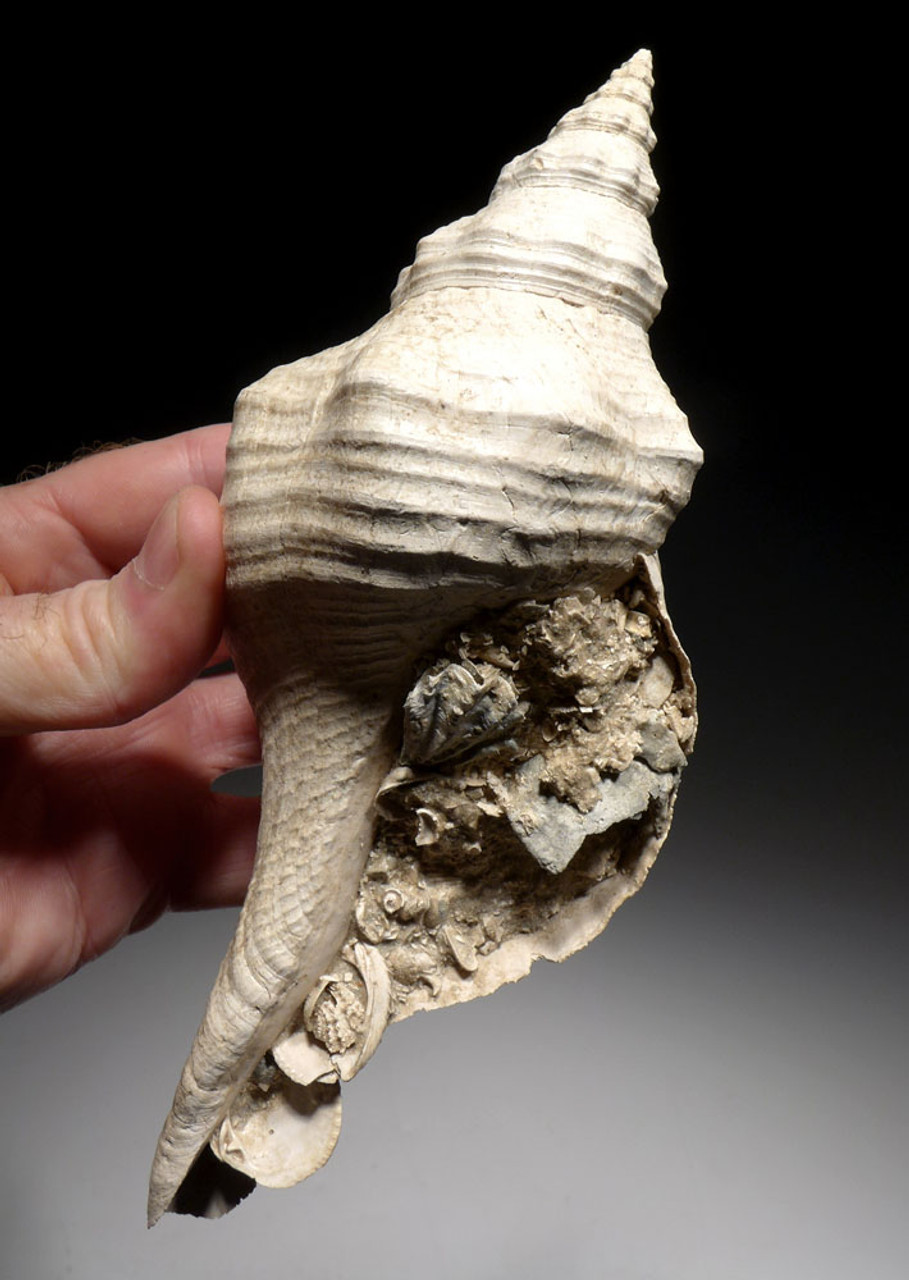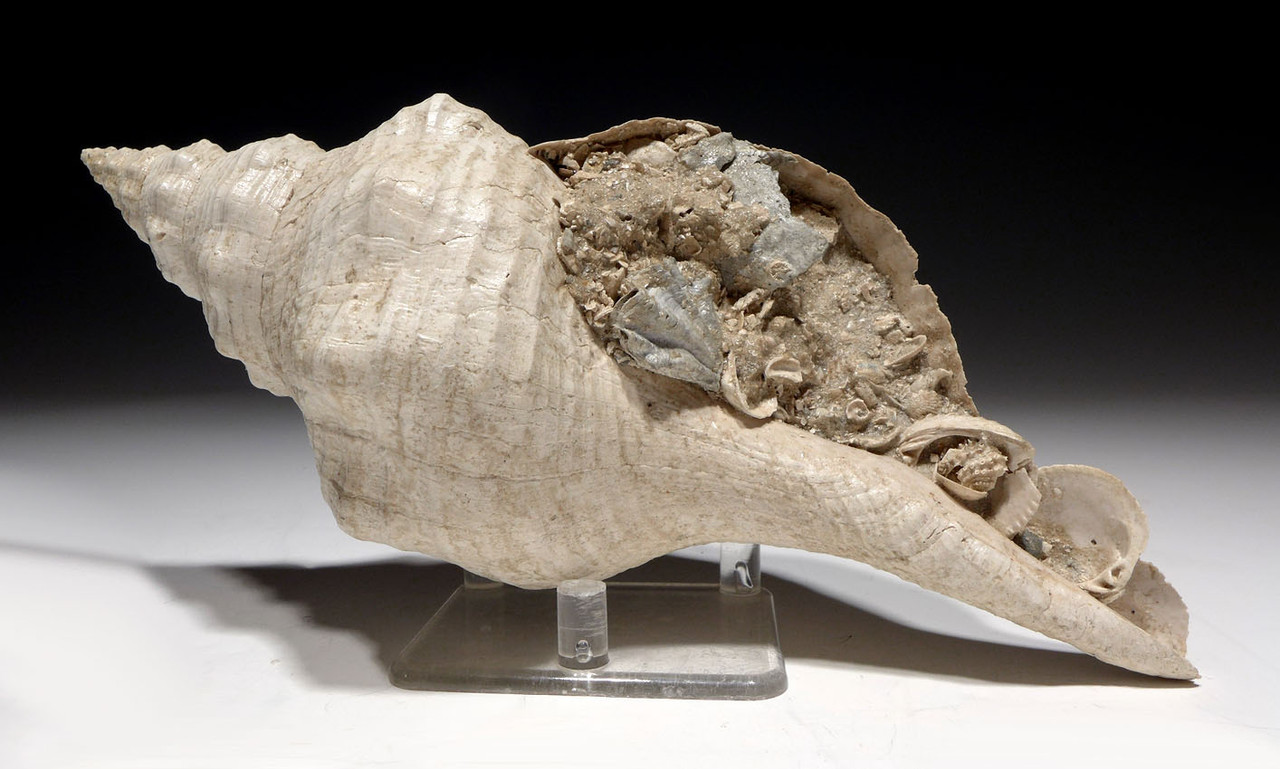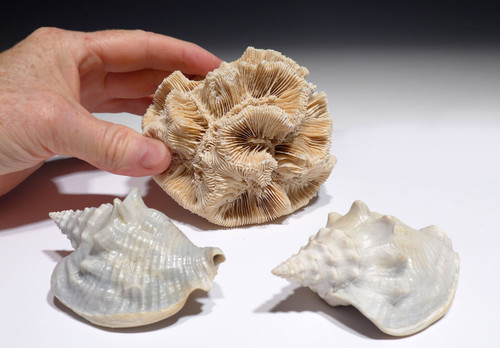Product Description
Not to be confused with modern specimens, this is a prehistoric fossil sea snail shell of the species Triplofusus giganteus. It was collected by a long time, avid Florida fossil shell collector, in a shell pit in Florida, USA. This specimen was one of his nicest in his collection.
Known for its splendid array of gastropod fossils, Florida is home to many fossil shell species in abundance. The nature of finding a gastropod fossil in a shell pit, for example, usually means that it will be heavily weathered and seriously damaged. Certainly, delicate features of the shell are almost always missing. What is most unique and exciting about this fossil specimen of Triplofusus giganteus is that all the anatomy is still intact and well-preserved. The pointed centrum is complete and overall surface detail is still present and wonderfully visible.
Do not confuse this genuine fossil with inexpensive MODERN shells available in shell shops from this species. The interior is still filled with the original fossil shell matrix of the pit from which it was collected. This complete and very high-grade specimen came from a large sea snail that lived 5 million years ago, crawling around the ocean floor when the massive Megalodon shark still alive, terrorizing the waters off the southeastern Atlantic coast of prehistoric North America.
HISTORY
Triplofusus, otherwise known as the "Horse Conch", is the official Florida state shell. This massive gastropod is still alive today and can grow to a total overall living length of 24 inches! This species is a voracious carnivore common on both coasts of Florida from the shoreline down to a depth of about 100 feet. Although the shell is found throughout the southeast United States, in Texas, and northeast Mexico, it is much more common in Florida waters. In prehistoric times during the Pliocene Period, the imposing Triplofusus giganteus roamed the ocean floor searching for its primary victim, bivalves. This conch feeds by attaching itself to its prey with its foot and slowly rasping a hole in the shell of its unfortunate victim. Triplofusus giganteus can move great distances and can go against tidal currents with the use of its powerful foot.
CLICK HERE TO LEARN MORE ABOUT GASTROPODS
 US DOLLAR
US DOLLAR
 EURO
EURO
 AUSTRALIAN DOLLAR
AUSTRALIAN DOLLAR
 CANADIAN DOLLAR
CANADIAN DOLLAR
 POUND STERLING
POUND STERLING


















